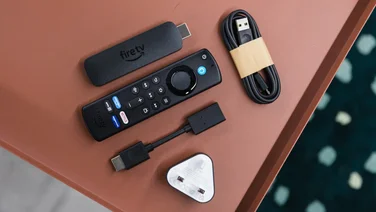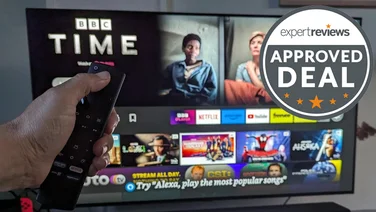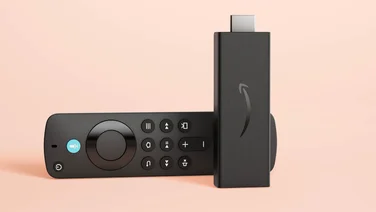To help us provide you with free impartial advice, we may earn a commission if you buy through links on our site. Learn more

The original Sonos Play:5 has long sat at the top of Sonos’ range of multiroom speakers as its flagship model, so much so that its design was beginning to look a little dated. Certainly, when viewed side-by-side, the new model looks far slicker and more attractive. Where the old model sat on a sort of pedestal base that looked slightly separate, the new Play:5 has a clean, uninterrupted rectangular design. It’s available in a choice of matte black or white and both are equally good-looking.
Importantly, the rectangular design now means that the speaker can be stood horizontally, or vertically on either end, giving you more flexibility as to where you place the speakers.

Build quality
Sonos says there are nearly 60,000 precision drilled holes in the front grill. Special consideration was even provided to the placement of the Sonos logo as not to impinge on the sound. The speaker cabinet also feels nicely solid and weighty. Along the top, Sonos has introduced touch-based controls that respond to swipes to adjust volume. There’s a gyroscope inside the Play:5 that detects its orientation so that volume increase is always at the top, which is smart. It’s also why there aren’t the traditional ‘-‘ and ‘+’ volume markings.

Rotating the Play:5 will obviously also have an effect on the physical speaker arrangement, and Sonos has taken this into account. When the Play:5 is stood vertically, the top tweeter is actually turned down so that sound isn’t directed up towards the ceiling. The larger centre tweeter takes over the main bulk of the work more like traditional stereo separate speakers.
As with Sonos’ other multiroom speakers, the real strength lies in how well-supported Sonos’ speakers are when it comes to internet streaming services through its Sonos Controller app for iOS, Android, Windows and OS X. The app is also used to initially set up the speaker to connect to your network and you’re taken through the process with clear step-by-step instructions for adding your wireless network details; there’s also an Ethernet port if your router is close by.

Streaming Services and Sonos Controller
Sonos supports a large number of the most popular music-streaming services, including Spotify, Deezer, Google Play Music, and Tidal, as well as plenty of internet radio services including TuneIn and Rdio. Sonos has promised that support for Apple Music is coming. Sonos has by far the most robust compatibility when it comes to services.

The Sonos Controller app works well with all of the services. If you use multiple streaming services, the app has universal search, so if you search for a particular artist or album it will search all of the music services you’ve integrated. This is particularly useful if there is music only available on certain services. Spotify is handled through the Sonos Controller app, rather than using the Spotify Connect protocol. Artists and albums you’ve saved in Spotify aren’t displayed in the Spotify section of the Sonos app for you to browse, which means you’ll have to manually search for content instead. Playlists you create in Spotify do at least show up.
Without Spotify Connect it also means you can’t seamlessly switch between devices and speakers and pick up where you left off. What I love about Spotify Connect is listening to an album or song on my smartphone and then swapping over to speakers as soon as I get home, which isn’t possible with Sonos’ system. However, Sonos has one big advantage: you can play multiple streams from one Spotify account. This means that you can play different tracks in every room where you have a Sonos player; normally, Spotify only lets you stream one track at a time.

You can also access music stored on your smartphone and tablet running the Sonos Controller app, or networked computers or a NAS for your own local music.
I personally find that Sonos uses an awkward and slightly unwieldy queueing system for playing music and creating playlists. You need to specifically add albums to the queue for them to play, rather than just selecting a track from the album with it continuing on to the next track as you would expect. It means starting an album mid-way becomes fiddly. Once you get used to the system, it’s not a problem and the queuing system means it’s easy to build a playlist on-the-fly.
There’s also an independent Sonos playlist system, which lets you save your queue for later use, or create a playlist for another day. It’s particularly useful for creating playlists of tracks that span multiple streaming services or network locations. Aside from a few annoyances that you eventually get used to, the app is otherwise cleanly designed and easy to navigate.
Sound quality
You’re able to use it to group speakers if you have multiple Sonos speakers around the house and want to play music simultaneously, as well as pairing two Play:5s as a stereo pair (one for the left channel and one for the right). Sonos has said that if you position the speakers vertically you get a wider soundstage; horizontally gives you more distinct stereo separation.
If you have a Sonos PLAYBAR and SUB you can also use two Play:5s for the rear channels to create a wireless 5.1 setup, although this will prove quite costly; I recommend using Play:1 speakers for this job. As well as acting as an internet-connected multiroom speaker, there’s an auxiliary line in on the back of the Play:5 if you want to connect a wired audio source. This can be anything from a CD player to a turntable.
Inside the Play:5 are six custom-designed drivers: three mid-woofers and three tweeters for the high frequencies. These are paired with six class-D amplifiers. The Play:5 is able to deliver room-filling sound with aplomb. The bass, in particular, is rich with a good degree of weight and impact but they don’t muddy the highs. The mids and treble, in fact, are bright and crisp. The hi-hats in a jazz track are distinct and vocals have a wonderful clarity. Across genres the Sonos managed to perform exceptionally delivering impact and excitement when tracks required it, or a more delicate touch for acoustic, vocal-driven songs.

Trueplay
Acoustic performance can be drastically affected by how you place your speakers, whether that’s close to a wall, recessed in a corner or hidden behind a curtain. The latter, according to Sonos, is a common occurrence when it talks to its users. Not everyone wants to have their speakers out on display it seems.
Sonos’ new Trueplay tuning software comes as part of the Sonos Controller app. Trueplay attempts to bring “acoustic transparency” by calibrating your speaker based on the acoustic response of your room. The speaker will emit a test sound and use your iOS device’s microphone to take measurements as you walk around the room. You’ll need to wave your arms and device around in circles and there’s a pretty thorough tutorial in the app. It will also tell you when you’re not moving enough.

The Trueplay software then analyses how the test frequency bounces off different surfaces in your room and then tunes the speaker accordingly for the best result. Trueplay, at present, will unfortunately only work with iPhones, iPads and iPods. This is because of the standard hardware inside, so Sonos knows how each microphone performs. There’s simply too much variation in Android and Windows Phone devices until it can build a hardware catalogue of the various microphone hardware.
In testing, the Trueplay did help but only in more extreme scenarios such as when the speaker was put in an enclosed bookshelf. Where it sounded muffled before, with a lot of the treble being lost, Trueplay adjusted the EQ to emphasise the higher frequencies, helping to restore some of the lost detail. Trueplay is certainly something worth doing, even if it’s not always going to make a massive difference. It’s just a shame you might need to borrow an iOS device in order to do so.
Conclusion
There’s an awful lot to like about the Sonos Play:5. The only real disappointment is the lack of Bluetooth support when rivals, such as the Bose SoundTouch 10, are now introducing speakers that have support for both internet music and Bluetooth connected devices. It leaves Sonos feeling slightly behind, which isn’t something you would necessarily associate with the company that could be considered a pioneer in bringing multiroom audio into the mainstream.

Regardless, if you’re an existing Sonos owner looking to introduce a new speaker or are buying your first, the Play:5 is a great sounding and attractive speaker. The Sonos Play:5 certainly sounds wonderful and lives up to its position as Sonos’ new flagship speaker.





